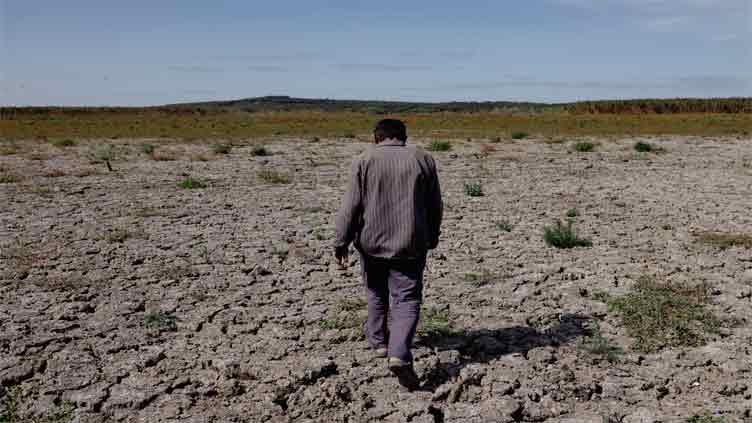Rising temperatures, erratic rains, less snow. Agriculture must adapt to the changing elements

Business
Urgent action required to change crop pattern for adapting to global warming-induced challenges
LAHORE/ISTANBUL (Web Desk) – Pakistan is certainly experiencing more and more extreme weather events in terms of heavier downpours, but the yearly amount of rains has declined since 1980s. Rains have become erratic and intense with the duration of rainy seasons also reducing, making Pakistan one of those countries which are worst impacted by global warming or climate change.
Rising temperatures means winters are getting shorter with longer summers and, as consequence, it getting more and more difficult to separate the spring and autumn seasons from summer.
Hence, snowfall is decreased markedly in places like Quetta and Abbottabad. The snowline is getting higher with no or very little snow at lower elevations with the snowcap at higher mountains also thinning or melting at a rapid rate.
It doesn’t stop there as glaciers are melting and that too at an alarming rate thanks to the rising temperatures.
Amid all this, Pakistan’s population is increasing at an alarming rate, resulting in more water consumption – not only because of more people but also due to increase in per capita consumption. Improved lifestyle and expansion in urban centres are the main reasons. At the same time, there is no improvement in farming techniques as water is wasted both during watering the crops and higher evaporation rate due to the rising temperatures.
With 240 million people to feed, the agriculture sector cannot withstand the climate change and urgently needs introduction of modern farming, which results in less water consumption, and, at the same time, change in crop pattern.
Any further delay would naturally affect food security in Pakistan as the country is already grappling with record-high food prices with the depreciating rupee making the imports expansive with each passing day.
If you don’t take this a serious issue, then please read the following Reuters report about the state of affairs in Turkiye, which explains how global warming is affecting the entire globe.
DRY RESERVOIRS
Cattle now graze and sunflowers grow in the dried lakebed of the Terkos Dam outside Istanbul, where a drought this year has reduced water levels in the reservoirs of Turkey's largest city to their lowest in nearly a decade.
In the 11 months to September, Turkey's northwest received 23 per cent less precipitation than average, according to the Turkish State Meteorological Service. In August alone, it was 74pc lower than average, and down 90pc from last year.
At Terkos Dam – among the fullest of Istanbul's 10 reservoirs – water levels are around 9pc. Overall levels are under 25pc, the lowest since 2014, risking water rationing and jeopardising some farming for its 16 million people.
Fishing boats are grounded along the dam's old water line. Nearby, villagers have planted sunflower fields to cultivate land left where the lake once was.
Mehmet Emin Gergili, a 45-year-old shepherd, said the water had receded significantly since he first came to the Terkos Dam to graze cattle three months ago.
There was no grass, it was all water. But now the cattle can go all the way to the other end. The water recedes every day," he said, standing in the lakebed and pointing off toward the new water line in the distance.
Villagers in nearby Ormanli, which depends on Terkos Dam water, could not sow most of their rice fields this year due to a lack of rain. Villagers at the local teahouse complained of subpar yields in 2023 that had slashed their income.
Farmer Cavit Gurbuz, 68, said residents had planted rice paddies here since 1958. They tried sowing different crops this year but the soil was not suitable.
"If you could see the field, it is cracked so wide your foot could go into it. It hasn't rained for a year. There has not been drenching rain for a year," he said.
Gurbuz, standing next to a dry former rice paddy that had not been left fallow, said 25,000 acres of soil would normally turn into a lake when floods arrived every year.
"We did not plant everywhere (this year) - only along the river where we could water them if needed. But we couldn't even water those because there is no water and the river is not flowing," he said. "We are very pessimistic (about coming years). Drought is raging everywhere."
HOT SUMMER CONSUMPTION
Tugba Olmez Hanci, head of the Strategy Development Department at Istanbul Water and Sewerage Administration (ISKI), said there was no need to be alarmed about a water shortage yet, as there were sources outside the city that could supply.
"The changes in climate we are experiencing, the drought or very heavy precipitation we see in different years, is a problem arising all over the world," said Hanci, also an environmental engineering professor at Istanbul Technical University.
She said authorities did not expect rain in September but that some models forecast precipitation in October. ISKI has cut supply for watering gardens and landscaping since late August, but Olmez said there were no plans yet for further rationing.
Adding to Istanbul's concerns is a sharp rise in summer water consumption, which averaged 3.25 million cubic metres per day this year compared to 3 million in 2022. On some days in July, it surged to 3.5 million cubic metres, Hanci said.
She attributed the rise to Istanbul's swelling population and said the actual number of people living in the city is far more than the official 16 million, given the presence of unregistered migrants.
"As the population rises, water consumption will rise. But together with this, we can also see certain increasing trends in water consumption that come with extreme heat."


